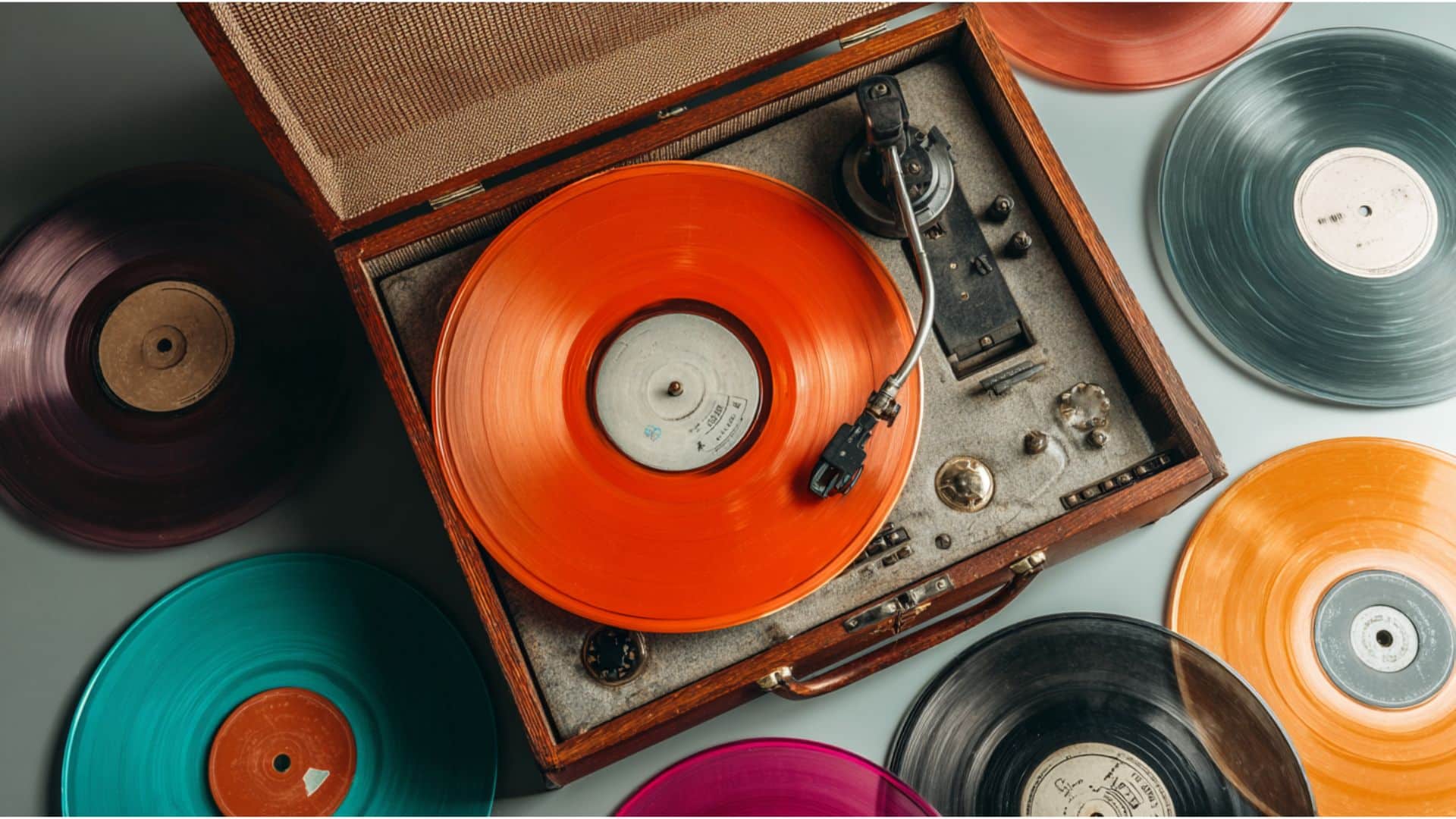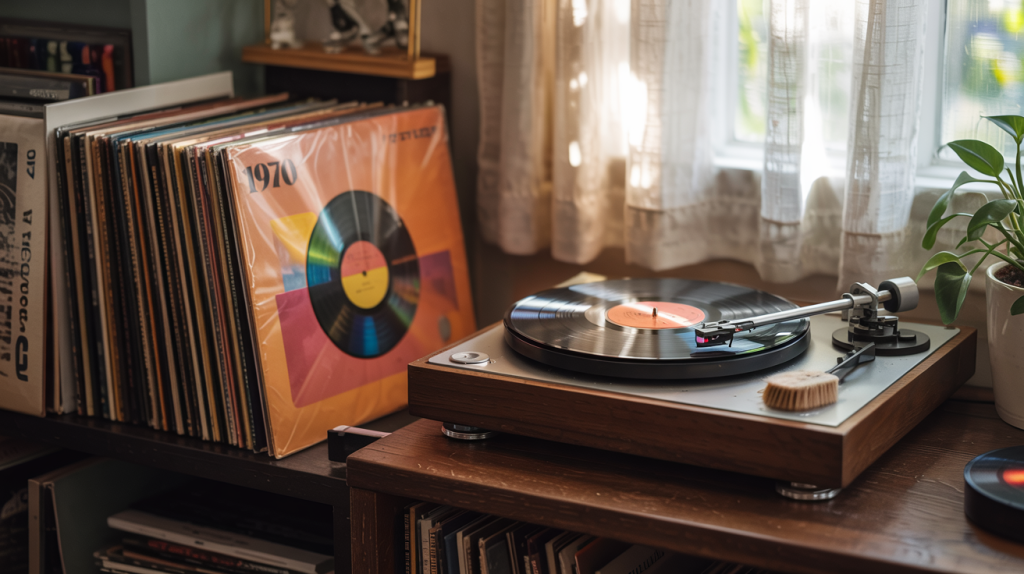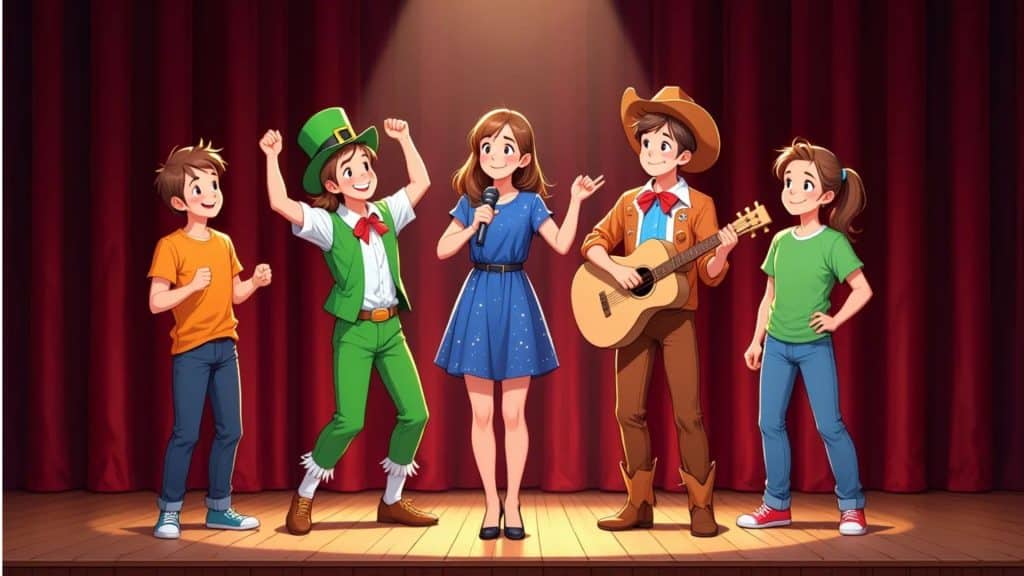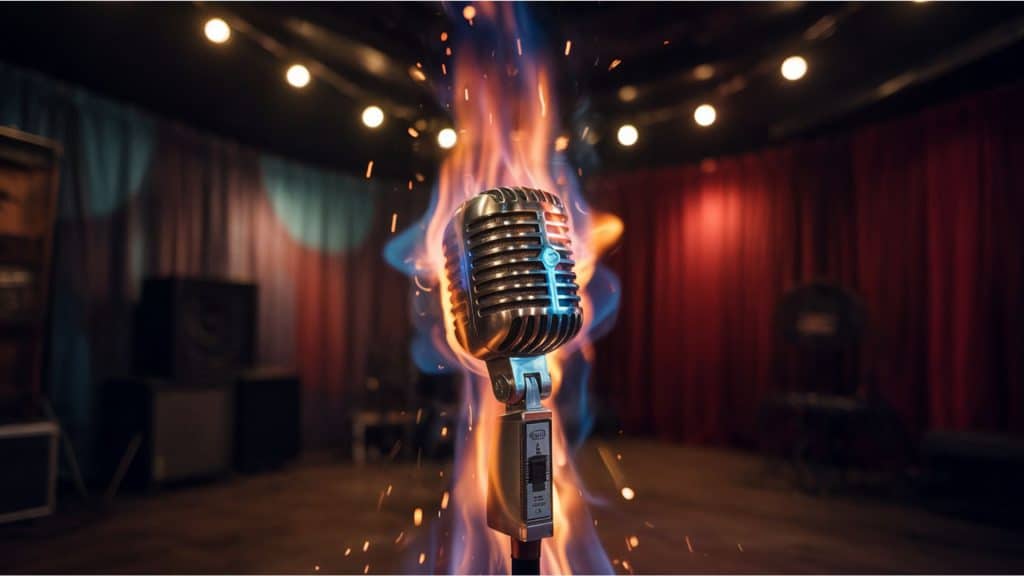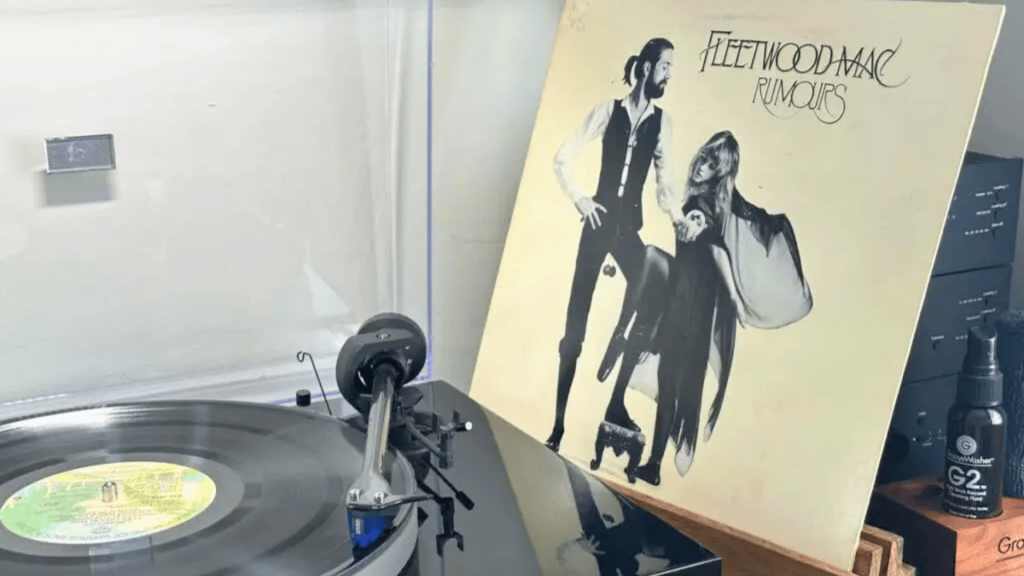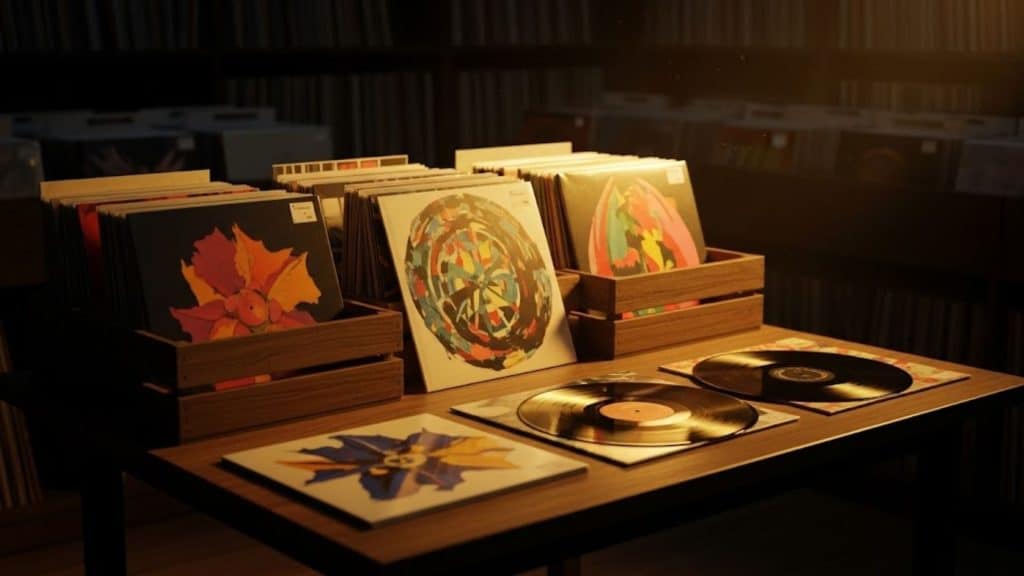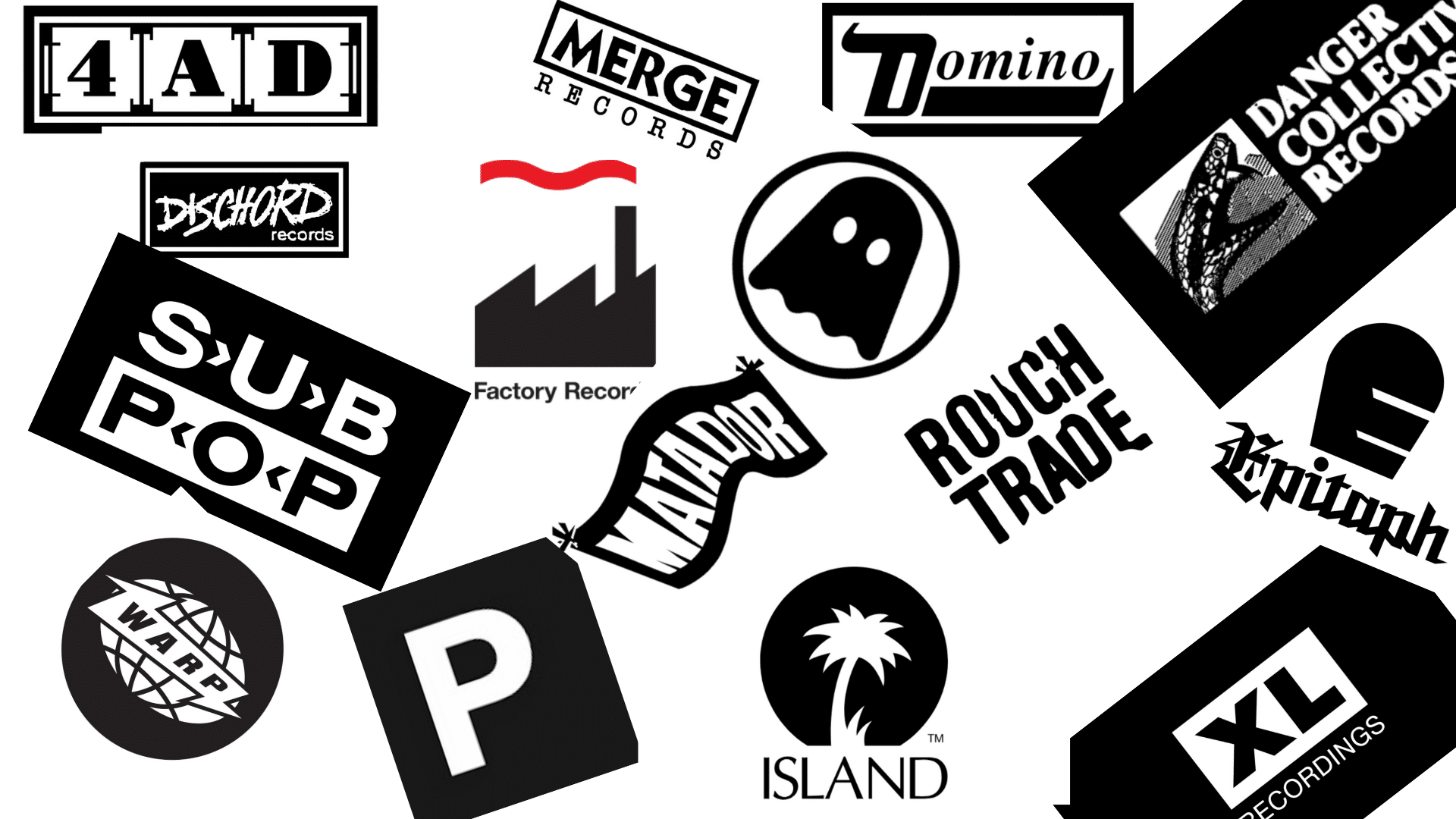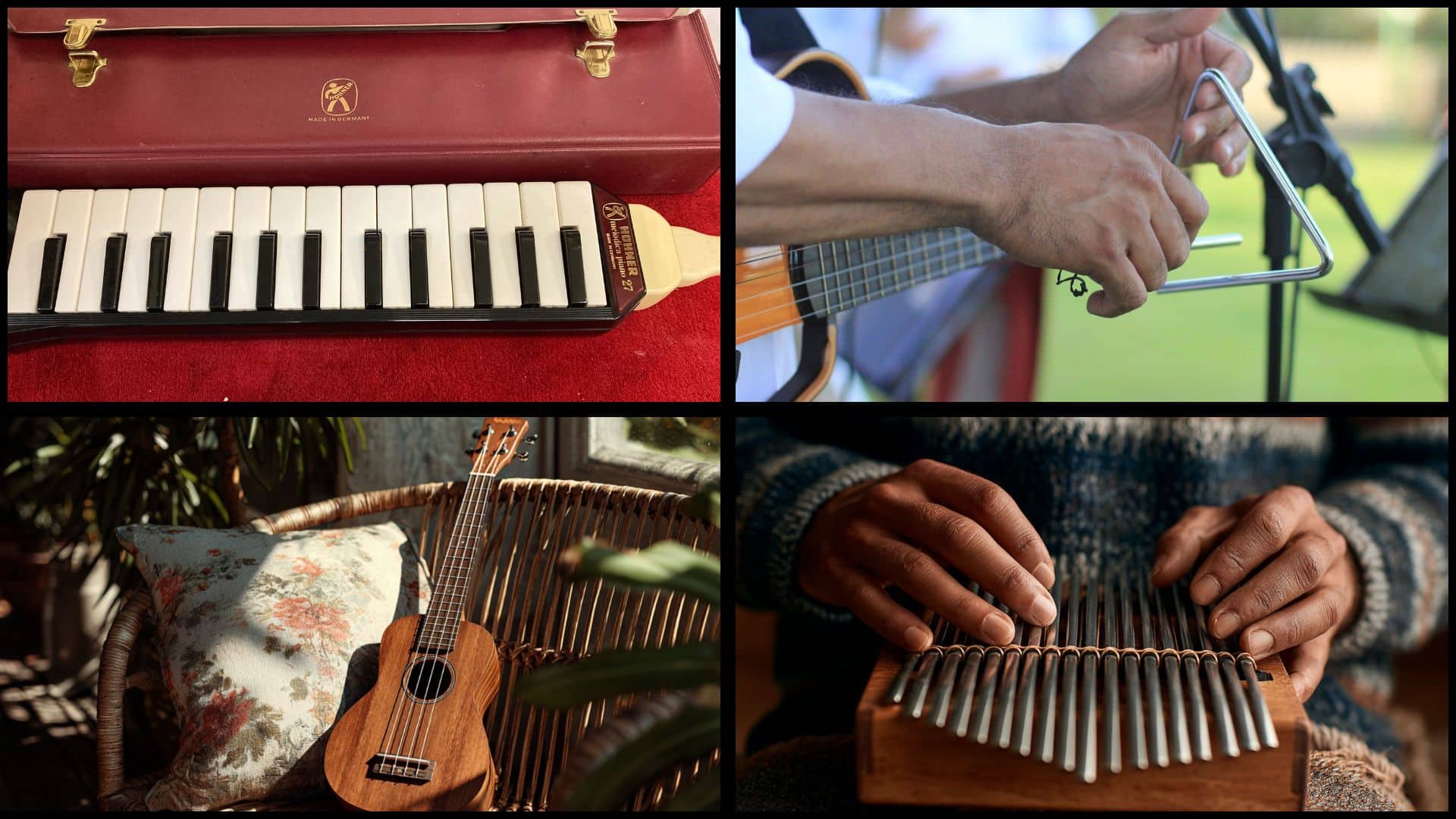Have you noticed how vinyl records are making a comeback, appearing in trendy coffee shops and on your friend’s Instagram posts? This vinyl revival has turned collecting into one of the hottest hobbies around.
Vinyl records first appeared in the late 1800s and became the primary means of enjoying music at home. They shaped entire generations of music lovers and created countless memories.
Different types of vinyl records, including classic shellac records and modern colored pressings, serve unique purposes for collectors today.
I’ll cover every format you need to know, including sizes, speeds, materials, and specialty releases.
If you’re a curious beginner or seasoned collector, understanding these vinyl types helps you make smarter buying decisions. I’ll guide you through the glamorous world of record formats.
Understanding Vinyl Record Basics
Vinyl records might look simple, but they’re amazing pieces of technology that turn tiny bumps into beautiful music.
Every record has three main parts that work together perfectly. The grooves are like a long spiral road from the outside edge to the center. The label in the middle indicates the type of music you’re hearing. The center hole lets the record spin on your turntable.
Here’s where it gets cool: sound is stored as tiny bumps and dips carved into grooves. When your needle rides along this bumpy path, it vibrates and turns those physical bumps back into sound waves.
The quality depends on how well the grooves were cut and how clean your record stays. Better grooves mean better sound.
Types of Vinyl Records by Size
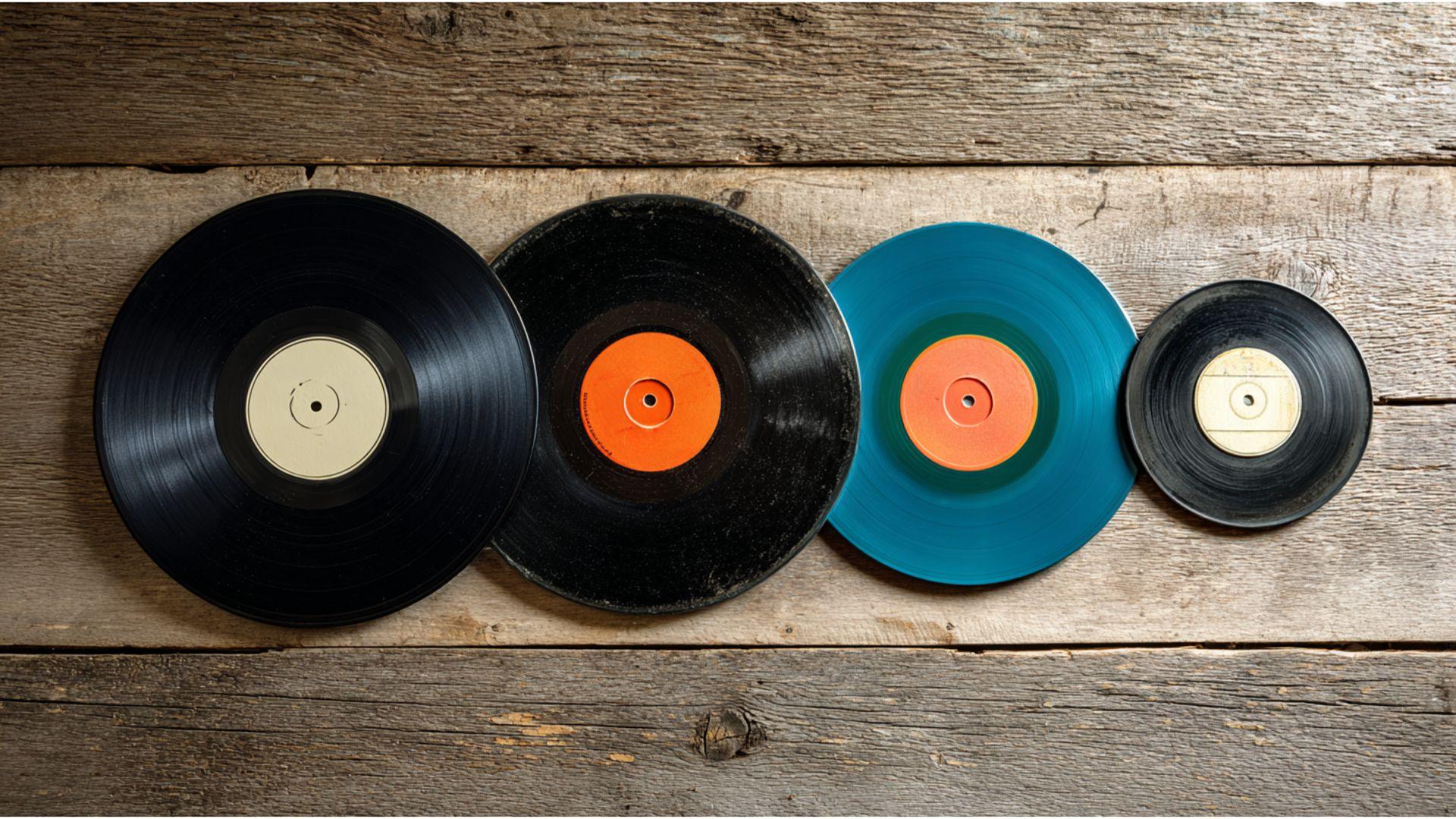
Vinyl records come in different sizes, and each size serves a specific purpose for music lovers. Let’s uncover the most common sizes you’ll find in record stores and collections.
12-Inch Records (LPs – Long Playing)
These are the big records that most people think of when they hear “vinyl album.” LPs can hold about 20-25 minutes of music per side, making them perfect for full albums. Most record collections are built around these standard album-sized records.
Famous examples include The Beatles’ “Abbey Road,” Pink Floyd’s “Dark Side of the Moon,” and Michael Jackson’s “Thriller.” Artists use this format when they want to tell a complete musical story or showcase their full creative vision.
7-Inch Records (Singles)
Singles are the small records that made individual hit songs famous worldwide. They typically hold 3-5 minutes per side, which is perfect for radio play. The A-side features the main hit song, while the B-side often has a lesser-known track or alternate version.
Hit songs like “I Want to Hold Your Hand” and “Billie Jean” became famous on 7-inch singles. Radio stations loved this format because songs fit perfectly into their programming schedules.
10-Inch Records
These medium-sized records are less common but still important for serious music fans. They hold more music than singles but less than full albums, making them perfect for EPs.
Many artists use 10-inch records for special releases that have 4-6 songs. Today, collectors really want these records because they’re harder to find than other sizes. Some bands release special 10-inch versions of their music for dedicated fans who want something unique.
Rare and Specialty Sizes
Some records come in unusual sizes that make collectors extremely excited to find them. Giant 16-inch transcription discs were used by radio stations for special broadcasts and long programs.
Picture discs have images printed right on the playing surface, making them look amazing. Shaped records are cut into fun shapes, such as hearts, stars, or band logos, instead of circles. Mini records are tiny novelty items that actually play music on special small turntables.
Types of Vinyl Record by Playing Speed (RPM)
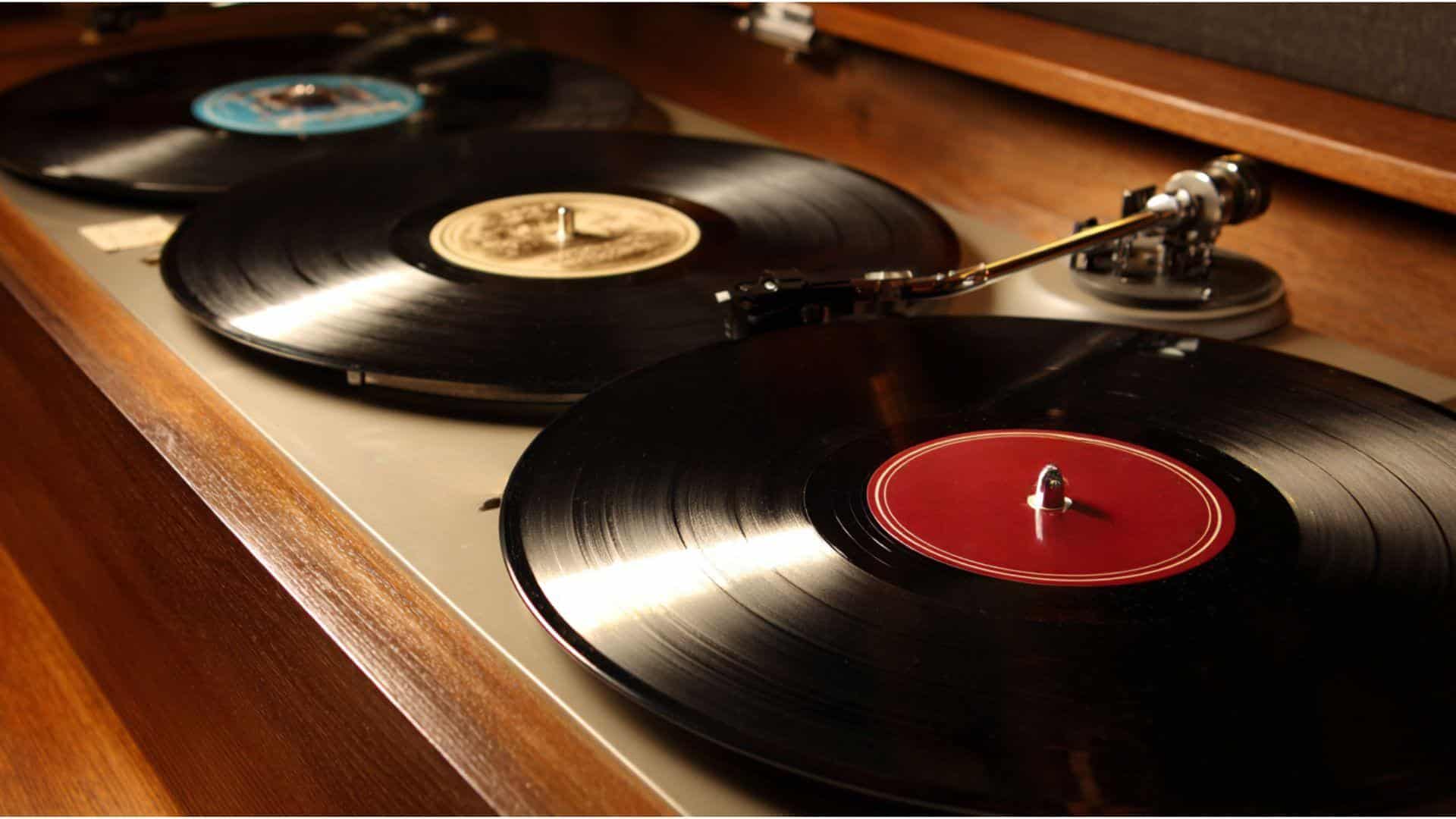
Different vinyl records spin at different speeds, and each speed has its own special purpose.
RPM stands for “revolutions per minute” and measures how fast the record spins on your turntable. The speed affects how much music fits and how good it sounds.
33⅓ RPM Records
These slow-spinning records are perfect for full albums because they can hold lots of music. One side can play for about 20-25 minutes, which gives artists plenty of time for their songs. The slower speed means more grooves can fit on the record surface.
Most of your favorite albums probably spin at this speed. The sound quality is excellent for long listening sessions, although some audiophiles prefer faster speeds for certain music genres.
45 RPM Records
These fast-spinning records are the kings of single songs and short releases. They sound crisp and clear because the needle moves faster through the grooves. Jukeboxes in diners and bars loved this format because songs sounded punchy and exciting.
Radio DJs preferred them too because they were easy to handle and sounded great on air. Many collectors think 45s have the best sound quality per minute of any vinyl format.
78 RPM Records (Historical)
These super-fast records were the original way people heard music at home before LPs existed. They were made from shellac instead of vinyl, making them much more fragile than modern records.
Each side only held about 3-4 minutes of music, so longer songs had to be split up. Today, collectors pay big money for rare 78s because they represent music history. You need a special needle to play them without damaging the grooves.
Types of Records by Material and Construction
Vinyl records come in many different materials and styles, each with unique characteristics. The table below shows the main types and what makes each one special.
| Type | Description | Key Features |
|---|---|---|
| Standard Black Vinyl | Traditional petroleum-based vinyl | Best sound quality, most durable, affordable |
| Colored Vinyl Records | Dyed vinyl in various colors | Display appeal, limited releases, and potential sound issues |
| Picture Discs | Images printed on a record surface | Visual appeal, lower sound quality, collectible |
| Splatter and Marble Vinyl | Mixed colors create unique patterns | Each record is unique, limited edition, and sells out fast |
| Recycled and Eco-Friendly Vinyl | Made from recycled materials | Sustainable, different texture, growing demand |
Understanding these different types helps you choose the right records for your collection. If you want the best sound or eye-catching display pieces, there’s a vinyl type for you.
How to Choose the Right Type for Your Collection
Choosing the perfect vinyl records for your collection depends on what you want to do with them. Consider your primary objectives before you begin shopping. If you’re buying records mainly for listening, focus on sound quality over fancy looks.
Standard black vinyl usually sounds the best and costs less than colored versions. Picture discs and colored vinyl look amazing in frames when displayed on walls. These eye-catching records become great conversation starters.
Investment collectors should research rare pressings, limited editions, and first releases from famous artists. These records often increase in value over time.
Make sure your turntable can handle different record speeds before buying. Balance your budget between getting rare finds and maintaining good sound quality.
Wrapping Up
Now you know about all the major types of vinyl records, including small singles and colorful picture discs. Each format brings something special to your collection goals.
I recommend choosing records based on what matters most: amazing sound quality, eye-catching display value, or investment potential. Your turntable setup and budget should drive decisions too.
Black vinyl delivers the best audio experience, while colored pressings add visual excitement. Limited editions can grow in value over time.
The beauty of vinyl collecting is that there’s no wrong choice – just different paths to musical happiness. Start with what excites you most.
Ready to spin some records? Share your coolest vinyl find below!

